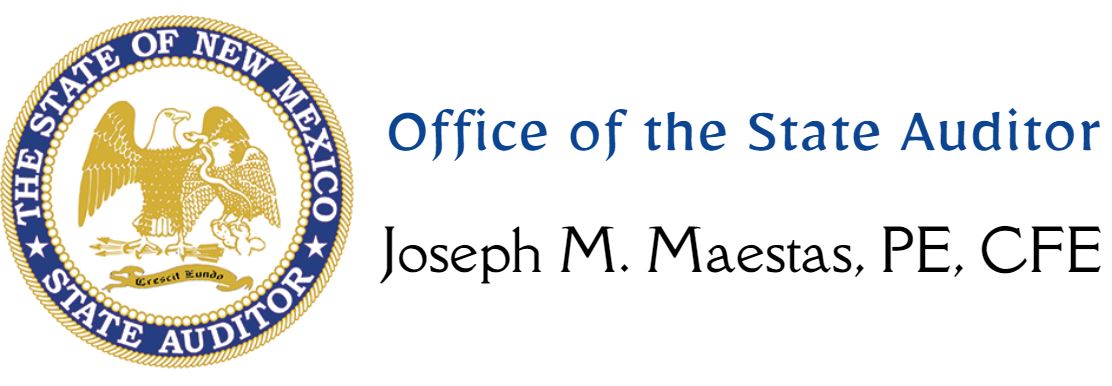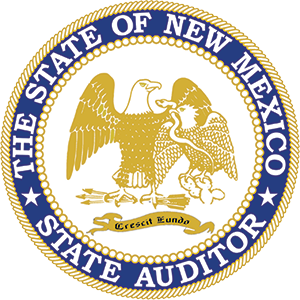Agreed-Upon Procedures (AUP) and Tiered Certification Due Dates At-A Glance
For local public bodies with a June 30 fiscal year-end that qualify for the tiered system, the report or certification due date is December 15.
Local public bodies with a fiscal year end other than June 30 shall submit the AUP report or certification no later than five months after the fiscal year-end.
Late AUP reports (not the current reporting period) are due not more than six months after the date the contract was executed.
Audit Rule Citations:
2.2.2.16 ANNUAL FINANCIAL PROCEDURES REQUIRED FOR LOCAL PUBLIC BODIES WITH ANNUAL REVENUES LESS THAN FIVE HUNDRED THOUSAND DOLLARS ($500,000) (TIERED SYSTEM):
A. Annual revenue determines type of financial reporting: All local public bodies shall comply with the requirements of Section 6-6-3 NMSA 1978. Pursuant to Section 12-6-3 NMSA 1978, the annual revenue of a local public body determines the type of financial reporting a local public body shall submit to the OSA. Local public bodies are mutual domestic water consumers associations, land grants, incorporated municipalities, and special districts. The annual revenue of a local public body shall be calculated on a cash basis, inclusive of state-funded grants but excluding capital outlay funds, federal and private grants. For the purpose of Section 2.2.2.16 NMAC “capital outlay” is funding provided through capital appropriations of the New Mexico legislature. For the purpose of Section 2.2.2.16 NMAC “private grant” means funding provided by a non-governmental entity.
B. Determination of revenue and services: Annually, following the procedures described in Subsection F of Section 2.2.2.8 NMAC, the state auditor shall provide local public bodies written authorization to obtain services to conduct a financial audit or other procedures. Upon receipt of the authorization, a local public body shall determine its annual revenue in accordance with Subsection A of Section 2.2.2.16 NMAC. The following requirements for financial reporting apply to the following annual revenue amounts (tiers):
(1) if a local public body’s annual revenue is less than ten thousand dollars ($10,000) and the local public body did not directly expend at least fifty percent of, or the remainder of, a single capital outlay award, then the local public body is exempt from submitting a financial report to the state auditor, except as otherwise provided in Subsection C of Section 2.2.2.16 NMAC;
(2) if a local public body’s annual revenue is ten thousand dollars ($10,000) or more but less than fifty thousand dollars ($50,000), then the local public body is exempt from submitting a financial report to the state auditor, except as otherwise provided in Subsection C of Section2 .2.2.16 NMAC;
(3) if a local public body’s annual revenue is less than fifty thousand dollars ($50,000), and the local public body expended at least fifty percent of, or the remainder of, a single capital outlay award during the fiscal year, then the local public body shall procure the services of an IPA for the performance of a tier three AUP engagement in accordance with the audit contract for a tier three AUP engagement;
(4) if a local public body’s annual revenue is greater than fifty thousand dollars ($50,000) but less than two hundred-fifty thousand dollars ($250,000), then the local public body shall procure the services of an IPA for the performance of a tier four AUP engagement in accordance with the audit contract for a tier four AUP engagement;
(5) if a local public body’s annual revenue is greater than fifty thousand dollars ($50,000) but less than two hundred-fifty thousand dollars ($250,000), and the local public body expended any capital outlay funds during the fiscal year, then the local public body shall procure the services of an IPA for the performance of a tier five AUP engagement in accordance with the audit contract for a tier five AUP engagement;
(6) if a local public body’s annual revenue is two hundred-fifty thousand dollars ($250,000) or greater, but less than five hundred thousand dollars ($500,000), the local public body shall procure services of an IPA for the performance of a tier six AUP engagement in accordance with the audit contract for a tier six AUP engagement;
(7) if a local public body’s annual revenue is five hundred thousand dollars ($500,000) or more, this section shall not apply and the local public body shall procure services of an IPA for the performance of a financial and compliance audit in accordance with other provisions of this rule;
(8) not-withstanding the annual revenue of a local public body, if the local public body expended seven hundred-fifty thousand dollars ($750,000) or more of federal funds subject to a federal single audit during the fiscal year then the local public body shall procure a single audit.
C. Exemption from financial reporting: A local public body that is exempt from financial reporting to the state auditor pursuant to Subsection B of Section 2.2.2.16 NMAC shall submit written certification to LGD and the state auditor. The certification shall be provided on the form made by the state auditor, available through OSA-Connect. The local public body shall certify, at a minimum:
(1) the local public body’s annual revenue for the fiscal year; and
(2) that the local public body did not expend fifty percent of or the remainder of a single capital outlay award during the fiscal year.
D. Procurement of IPA services: A local public body required to obtain an AUP engagement shall procure the services of an IPA in accordance with Subsection F of Section 2.2.2.8 NMAC.
E. Requirements of the IPA selected to perform the AUP:
(1) The IPA shall provide the local public body with a dated engagement letter during the planning stages of the engagement, describing the services to be provided. See Subsection F of Section 2.2.2.10 NMAC for applicable restrictions on the engagement letter.
(2) The IPA may not subcontract any portion of the services to be performed under the contract with the local public body except for the activation of a contingency subcontractor form in the event the IPA is unable to complete the engagement.
(3) The IPA shall hold an entrance conference and an exit conference with the local public body unless the IPA has submitted a written request to the OSA for an exemption from this requirement and has obtained written approval of the exemption from the OSA. Unless the cost of the AUP is five thousand dollars ($5,000) (excluding GRT) or less, the exit conference shall be held in person; a telephone or webcam exit conference shall not meet this requirement. The OSA has the authority to notify the agency or IPA that the state auditor shall be informed of the date of the entrance conference, any progress meetings and the exit conference. If such notification is received, the IPA and agency shall invite the state auditor or his designee to attend all such conferences no later than 72 hours before the proposed conference or meeting.
(4) The IPA shall submit the report to the OSA for review in accordance with the procedures described at Subsection B of Section 2.2.2.9 NMAC. Before submitting the report to OSA for review, the IPA shall review the report using the AUP report review guide available on the OSA’s website at www.osa.nm.gov. The report shall be submitted to the OSA for review with the completed AUP report review guide. Once the audit report is officially released to the agency by the state auditor (by a release letter) and the required waiting period of five calendar days has passed, unless waived by the agency in writing, the audit report shall be presented by the IPA, to a quorum of the governing authority of the agency at a meeting held in accordance with the Open Meetings Act, if applicable. This requirement only applies to agencies with a governing authority, such as a board of directors, board of county commissioners, or city council, which is subject to the Open Meetings Act. The IPA shall ensure that the required communications to those charged with governance are made in accordance with AU-C 260.12 to 260.14.
F. Progress payments:
(1) Progress payments up to ninety-five percent of the contract amount do not require state auditor approval and may be made by the local public body if the local public body ensures that progress payments made do not exceed the percentage of work completed by the IPA. If requested by the state auditor, the local public body shall provide the OSA a copy of the approved progress billing(s).
(2) Final payments from ninety-five percent to one hundred percent may be made by the local public body only after the state auditor has stated in a letter to the local public body that the AUP report has been released by the state auditor and the management representation letter has been received by the state auditor.
G. Report due dates, notification letters and confidentiality:
(1) For local public bodies with a June 30 fiscal year-end that qualify for the tiered system, the report or certification due date is December 15. Local public bodies with a fiscal year end other than June 30 shall submit the AUP report or certification no later than five months after the fiscal year-end. Late AUP reports (not the current reporting period) are due not more than six months after the date the contract was executed. An organized bound hard copy of the report shall be submitted to the OSA. AUP reports submitted via fax or email shall not be accepted. A copy of the signed dated management representation letter shall be submitted with the report. If a due date falls on a weekend or holiday, or if the OSA is closed due to inclement weather, the report is due the following business day by 5:00 p.m. If the report is mailed to the state auditor, it shall be postmarked no later than the due date to be considered filed by the due date. If the due date falls on a weekend or holiday the audit report shall be postmarked by the following business day.
(2) As soon as the IPA becomes aware that circumstances exist that will make the local public body’s AUP report be submitted after the applicable due date, the auditor shall notify the state auditor and oversight agency of the situation in writing. This notification shall consist of a letter, not an email. However, a scanned version of the official letter sent via email is acceptable. There shall be a separate notification for each late AUP report. The notification shall include a specific explanation regarding why the report will be late, when the IPA expects to submit the report and a concurring signature by the local public body. If the IPA will not meet the expected report submission date, then the IPA shall send a revised notification letter. In the event the contract was signed after the report due date, the notification letter shall still be submitted to the OSA explaining the reason the AUP report will be submitted after the report due date. A copy of the letter shall be sent to the LGD, if LGD oversees the local public body. The late report notification letter is not required if the report was submitted to the OSA for review by the deadline, and then rejected by the OSA, making the report late when resubmitted.
(3) Local public body personnel shall not release information to the public relating to the AUP engagement until the report is released and has become a public record pursuant to Section 12-6-5 NMSA 1978. At all times during the engagement and after the AUP report becomes a public record, the IPA shall follow applicable professional standards and Section 2.2.2 NMAC regarding the release of any information relating to the AUP engagement.
H. Findings: All AUP engagements shall report as findings any fraud, illegal acts, non-compliance or internal control deficiencies, consistent with Section 12-6-5 NMSA 1978. The findings shall include the required content listed at Subparagraph (d) of Paragraph (1) of Subsection L of Section 2.2.2.10 NMAC.


Recent Comments